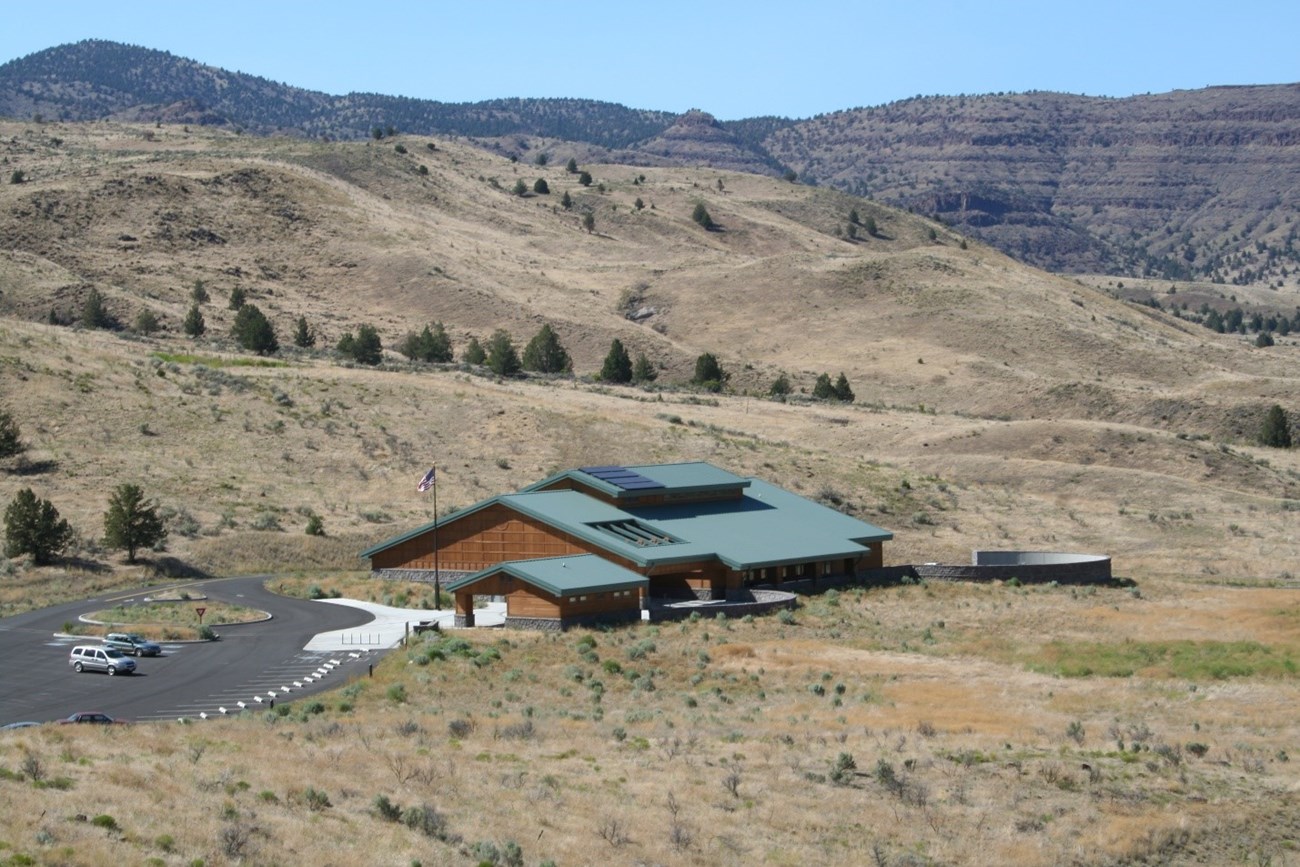Part of a series of articles titled Park Paleontology News - Vol. 12, No. 2, Fall 2020.
Article
Jennifer Cavin, Fossil Preparator at John Day Fossil Beds National Monument

Jennifer Cavin, Fossil Preparator
John Day Fossil Beds, Oregon

NPS photo.
With more than 20 years of experience in paleontology lab settings, Jennifer Cavin is the fossil preparator at John Day Fossil Beds National Monument (JODA) (Fig. 1). Her quest to become a paleontologist and preparator began at Chadron State College in Chadron, Nebraska, where she majored in Biology and minored in Geology. After receiving her BS, Jennifer moved on to the South Dakota School of Mines and Technology, where she worked in the paleontology lab and earned her MS in Paleontology under the advisement of Dr. James E. Martin. Her thesis work centered around describing a Pleistocene-aged fossil locality (45,000–9,500 years old) in the Sand Hills of Nebraska. During her summers, Jennifer worked at the famous Pig Dig at Badlands National Park in Interior, South Dakota. This is where she discovered her love for the mammals of the Cenozoic (from 66 million years ago to the present).
While her heart remained in the Oligocene (34–23 million years ago), Jennifer went on to work on dinosaurs in both lab and field situations in various places, including Illinois and Utah. When the opportunity arose, not only to work for the organization she loved so much, the National Park Service, but to work once again with mammals spanning from the Eocene to the Pliocene (56–3 million years ago), she jumped at the chance. Jennifer became the fossil preparator for John Day Fossil Beds National Monument in September of 2008 (Fig. 2). At that time, she was the only full-time permanent fossil preparator in the entire park service. It was a great honor.

NPS photo.
The importance of having a fossil preparator at a fossil park cannot be understated. A preparator’s main job is to expose the fossils that have been collected in the field. Everyone dreams of pulling a pristine fossil out of the field, but the reality is much different. Many recovered fossils are encased in the rock in which they have been housed for millions of years. A fossil preparator removes the rock that encases the fossil and repairs any damage that may have occurred to the bone between the time it was fossilized and the time it was found by paleontologists. Without someone preparing the fossil material, researchers would be unable to study the fossils, and displays would be much less exciting. Although preparation time varies with the size of the fossil and consistency of the surrounding rock, it realistically can take upwards of 100 hours to prepare a single specimen. The next time you walk through a museum display, take some time to think about all the work, from discovery, recovery and preparation, that occurred to bring that display to fruition.
In many ways a preparator is a time traveler. A preparator thinks about how a fossil was formed and deposited, which can inform how they proceed with the current treatment of the specimen (preparation can be accomplished through mechanical or chemical means). Always, a preparator thinks about how the treatment of the fossil will affect it in the near and far future. The ultimate goal is to preserve and protect the fossil resources for future study and enjoyment. Best practices advise that any treatment applied to a fossil should be carefully documented and reversable whenever possible.
This past year, JODA’s chief of paleontology, Dr. Nicholas Famoso, was contacted by Point Reyes National Seashore to see if Jennifer would be willing to prepare a fossil for their park. After negotiating for 150 hours of prep time, the block of rock containing the fossil arrived at the JODA paleontology laboratory. Through these many hours of preparation, Jennifer has revealed a dolphin skull that is currently under study. Future collaboration between the parks to have specimens prepared is expected.
Jennifer is very happy to apply her skills as a preparator at John Day Fossil Beds National Monument. It is a very special place. Within its strata, JODA preserves an extraordinary record of evolutionary and climatic changes from the Cenozoic, the “Age of Mammals”. Spanning almost 50 million years, it is one of the longest and most continuous fossil records exposed in the world.

NPS photo.
The park is split into three separate units. The Clarno unit is located near Fossil, Oregon and contains the park’s oldest fossil beds, including the Hancock Mammal Quarry. The Painted Hills unit is near Mitchell, Oregon and boasts beautifully striped red and gold hills that draw visitors from around the world. The Sheep Rock unit is near Kimberly, Oregon and is where the Sheep Rock overlooks the celebrated Thomas Condon Paleontology Center (TCPC) (Fig. 3).
JODA’s visitor center greets guests with a view into the paleontology lab, accessions and collections. Also located in the TCPC is a museum-quality gallery of fossils that will take you through a journey of climatic change in eastern Oregon via stunning murals and displays of the many fossils found in the John Day area.
A trip to the John Day Fossil Beds is well worth it! Come explore our many trails and discover the wonders that the Thomas Condon Paleontology Center holds. You can even wave hello to Jennifer as she uncovers the clues left to us by the excellent preservation of fossil life. But don’t tap the glass, she might be working on something delicate (Fig. 4).

NPS photo.
Related Links
- John Day Fossil Beds National Monument, Oregon—[Geodiversity Atlas] [Park Home]
- NPS—Fossils and Paleontology
- NPS—Geology
Last updated: February 6, 2023
